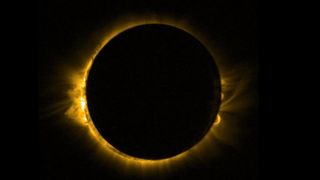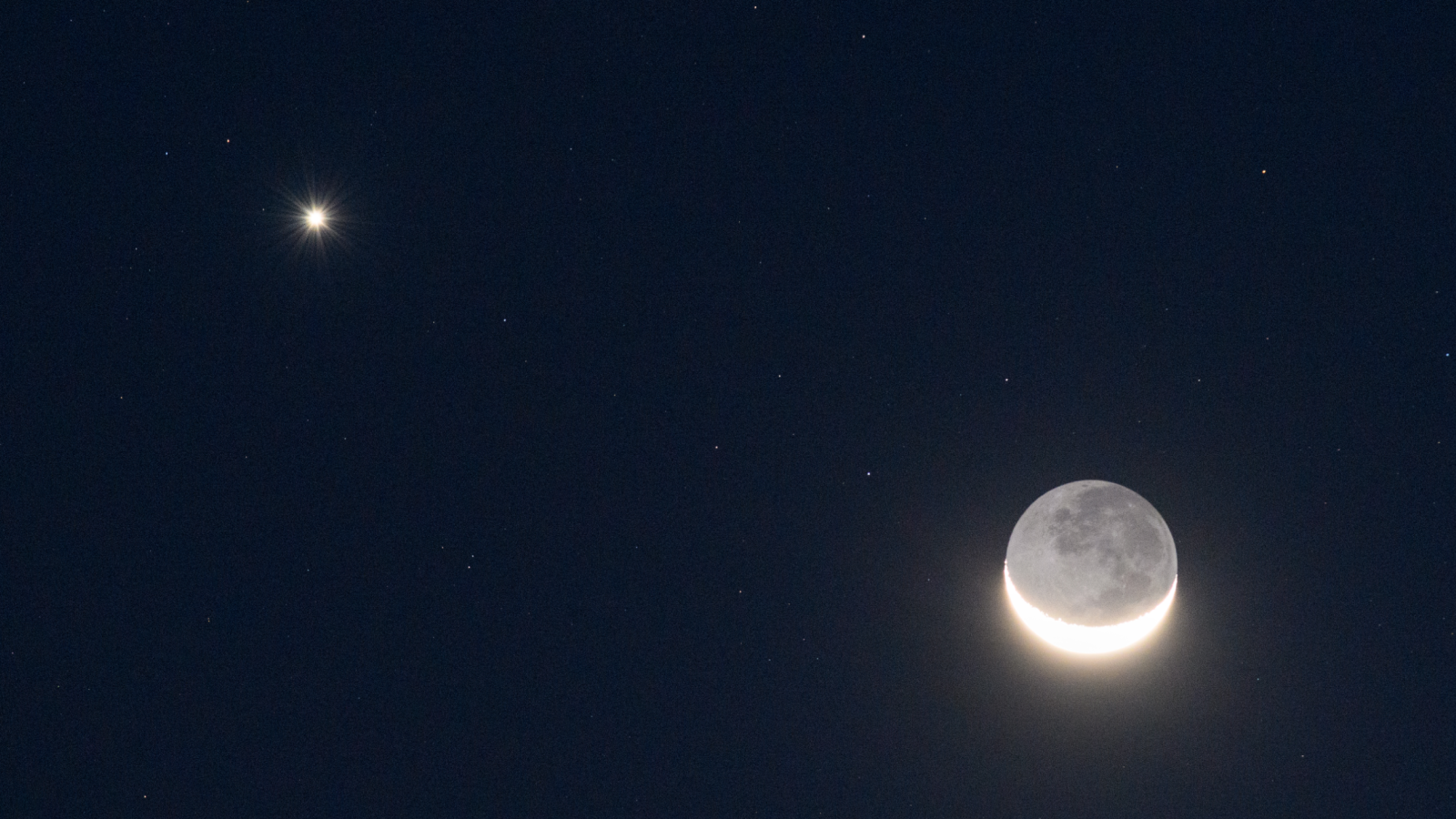
Jamie Carter
Jamie Carter is a freelance journalist and regular Live Science contributor based in Cardiff, U.K. He is the author of A Stargazing Program For Beginners and lectures on astronomy and the natural world. Jamie regularly writes for Space.com, TechRadar.com, Forbes Science, BBC Wildlife magazine and Scientific American, and many others. He edits WhenIsTheNextEclipse.com.
Latest articles by Jamie Carter
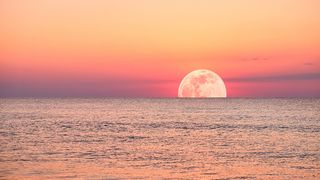
Strawberry Moon 2024: See summer's first full moon rise a day after solstice
By Jamie Carter published
June's full "Strawberry Moon" rises one day after the summer solstice in the Northern Hemisphere. This will be the lowest full moon of the year.

Three bright stars mark the beginning of summer. Here's how to spot the 'Summer Triangle' this week.
By Jamie Carter published
The appearance this week of the three bright Summer Triangle stars — Vega, Deneb and Altair — marks the beginning of summer in the Northern Hemisphere. Here's how to spot them.

Space photo of the week: 'Earthrise,' the Christmas Eve image that changed the world
By Jamie Carter published
Snapped from lunar orbit in 1968 by NASA astronaut Bill Anders, who died this week at age 90, 'Earthrise' is perhaps the most iconic image of our planet ever taken.
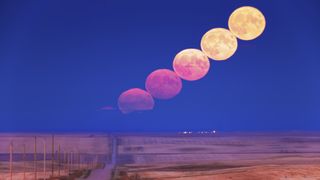
The 1st 'major lunar standstill' in more than 18 years is about to occur. Here's how to see it.
By Jamie Carter published
A major lunar standstill is about to occur. The phenomenon happens every 18.6 years when the moon rises and sets at its most extreme points on the horizon, while also climbing to its highest and lowest point in the sky.

Space photo of the week: James Webb and Chandra telescopes spot a 'lighthouse' pointed at Earth
By Jamie Carter published
Images from the James Webb Space Telescope and the Chandra X-ray Observatory have been combined to reveal how the Crab Nebula's neutron star is changing.

Space photo of the week: James Webb telescope spots galaxy churning out stars in overtime
By Jamie Carter published
The James Webb Space Telescope peers into NGC 4449, a small galaxy showing explosive star formation that astronomers can't quite explain.
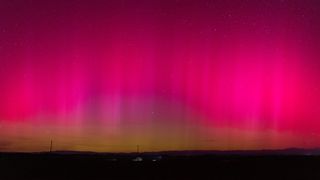
Auroras could paint Earth's skies again in early June. Here are the key nights to watch for.
By Jamie Carter published
The monster sunspot responsible for May's vibrant auroras will be facing Earth again in a matter of days, and it still appears to be active. Here's when to be alert for the next display of northern lights on the nights close to June's new moon.

Space photo of the week: NASA sees a 'Platypus' move on Jupiter's moon Europa
By Jamie Carter published
The Juno spacecraft, which orbits Jupiter, has been imaging the giant planet's moon Europa and spotted apparent movement in its icy crust.

Manhattanhenge 2024: Where and when to see the sun 'kiss the grid' in New York this week
By Jamie Carter published
The Instagram-worthy alignment of the setting sun and the streets of Manhattan is about to begin again. The annual spectacle is caused by New York City's gridiron layout.
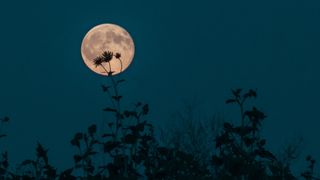
Tonight's 'Flower Moon' will rise close to a red supergiant star
By Jamie Carter last updated
May 2024's full moon, also known as the Flower Moon and the Planting Moon, will be at its fullest on Thursday, May 23. It will also appear bright and full on Wednesday and Friday.
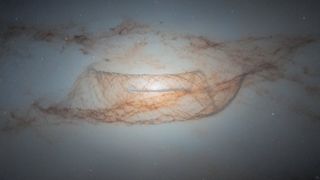
Space photo of the week: Hubble spots a twisted 'train-wreck' galaxy that may hide a cosmic illusion
By Jamie Carter published
The Hubble Space Telescope's stunning image of the dusty 'train-wreck' galaxy NGC 4753 reveals what may be one of the greatest optical illusions in the nearby universe.
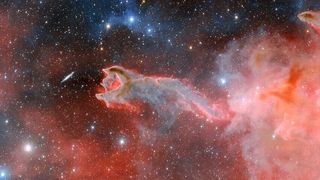
Space photo of the week: 'God's Hand' leaves astronomers scratching their heads
By Jamie Carter published
A new space photo captures "God's Hand", a cometary globule in the Gum Nebula, where stars are being born.
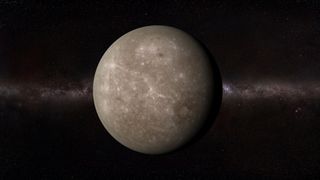
It's the best time of year to spot Mercury. Here's how to find it.
By Jamie Carter published
Mercury is about to reach its "greatest elongation west" of the sun, meaning stargazers will have their best view of the "swift planet" all year. Here's how to see it.
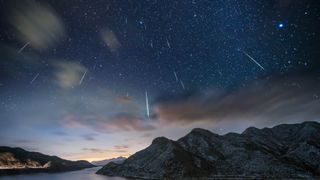
See up to 50 'shooting stars' per hour as the Eta Aquarid meteor shower peaks this weekend
By Jamie Carter published
Up to 50 "shooting stars" per hour may be visible in moonless skies as the Eta Aquarid meteor shower peaks Saturday and Sunday (May 4 and 5). The annual shower is linked to debris from Halley's comet.
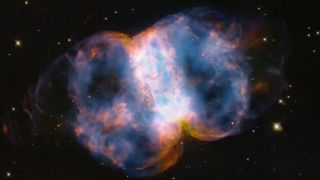
Space photo of the week: Little Dumbbell Nebula throws a wild party for Hubble telescope's 34th anniversary
By Jamie Carter published
Astronomers celebrated the Hubble Space Telescope's 34th anniversary with this stunning image of the Little Dumbbell Nebula — a vast cloud of gas containing one of the hottest white dwarf stars ever found.

Space photo of the week: Bizarre 'Helix Galaxy' is unlike any other in the universe. Can you see why?
By Jamie Carter published
The Helix Galaxy is a rare "polar ring" galaxy found near the Big Dipper. Its odd shape and history set it apart from every other galaxy we know of.
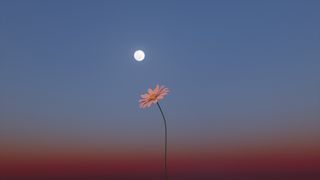
April's full 'Pink Moon' blooms amid a meteor shower tomorrow. Here's how to get the best view.
By Jamie Carter published
April's full moon, nicknamed the Pink Moon, rises on Tuesday (April 23), but will appear bright and full on Monday and Wednesday as well. Here's how to see it at its best.
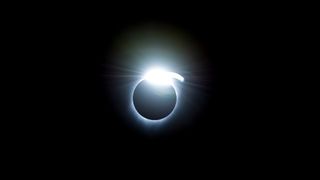
When is the next solar eclipse?
By Jamie Carter last updated
The next total solar eclipse will be visible from parts of Spain, Iceland and Greenland in 2026. Here's everything you need to know about how to watch the next solar eclipse.
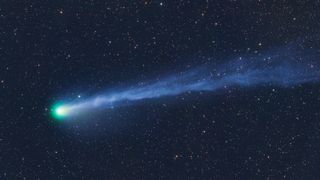
Explosive 'devil comet' 12P will soon be at its brightest and best. Here's how to see it before it disappears.
By Jamie Carter published
The explosive green 'devil comet' 12P/ Pons-Brooks is about to reach its closest point to the sun. Here's how to see the rare visitor at its best and brightest.

Top total solar eclipses to look out for over the next decade
By Jamie Carter published
Want to experience totality again? Here are the next seven total solar eclipses across the world, from Alaska to Australia.
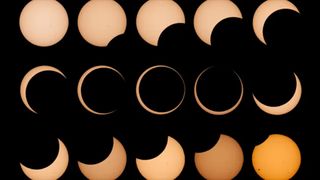
Annular solar eclipse 2024: Everything you need to know about the next solar eclipse
By Jamie Carter published
After the Great North American Eclipse comes a long "ring of fire" annular solar eclipse that can be seen in some iconic destinations.

When is the next total solar eclipse after 2024 in North America?
By Jamie Carter published
After the total solar eclipse on April 8, North America will have to wait exactly eight years, 11 months and 22 days for its next glimpse of the sun's corona.

How to safely record today's total solar eclipse with your phone
By Jamie Carter last updated
Here's how to safely, and effectively, take stunning photographs and videos of the solar eclipse with your smartphone on April 8.
Get the world’s most fascinating discoveries delivered straight to your inbox.
